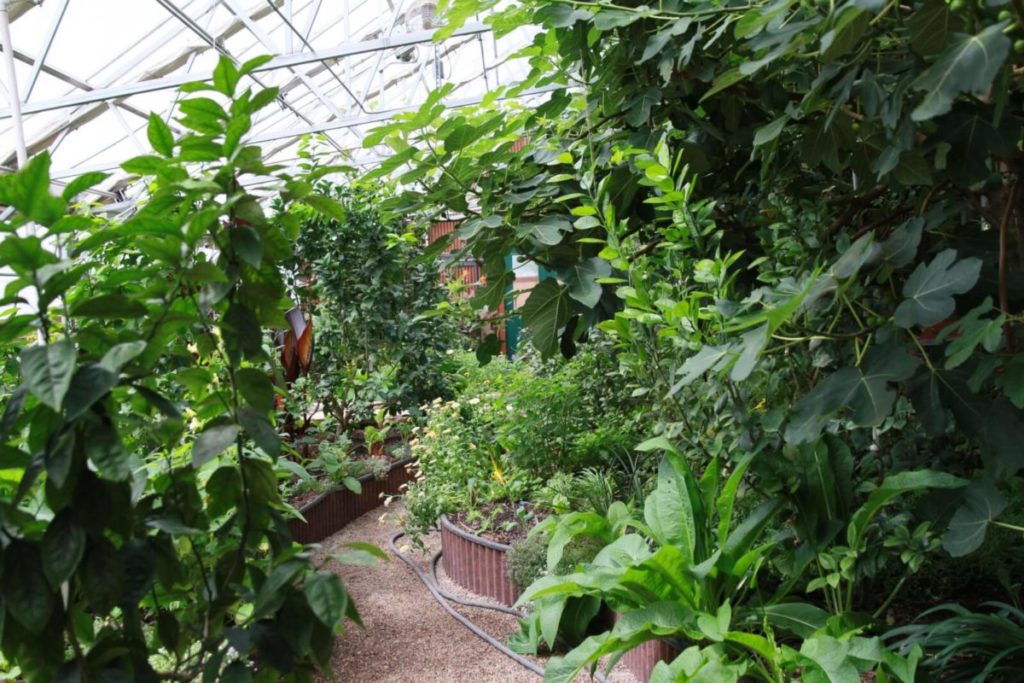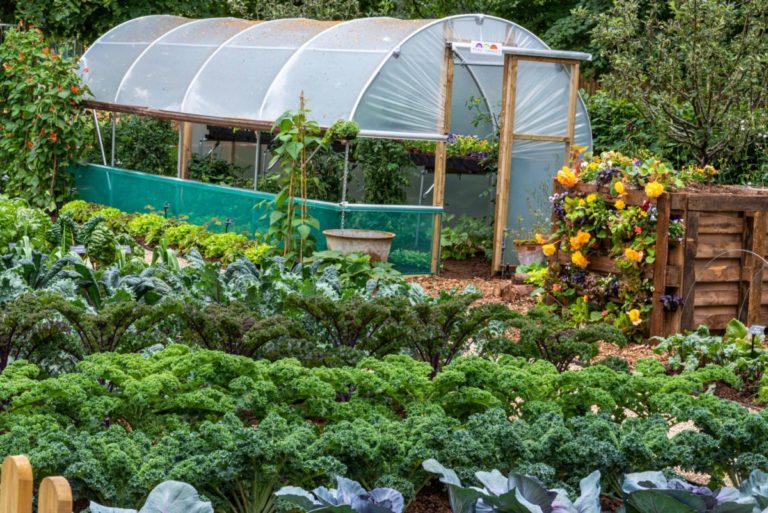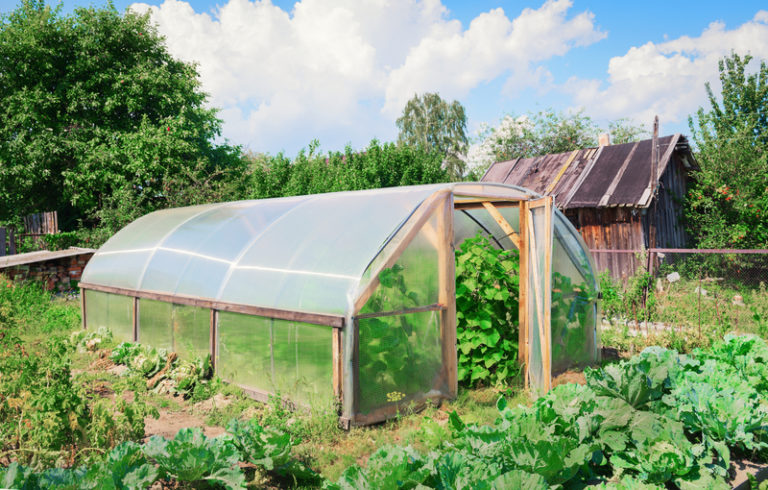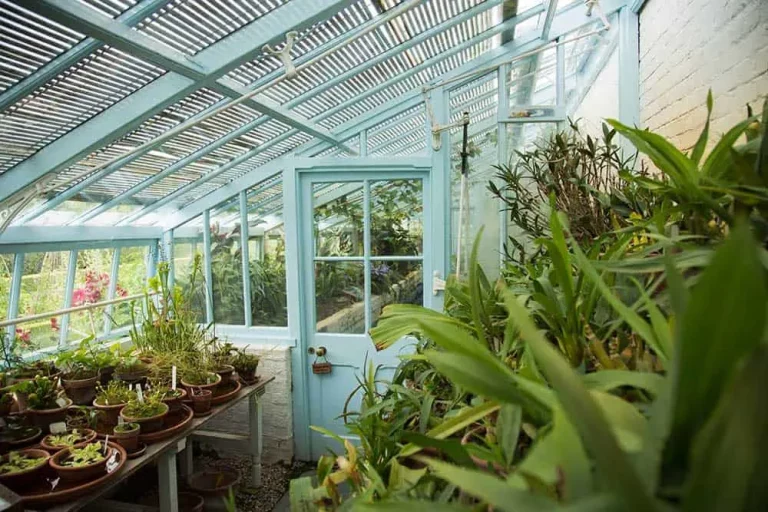Creating a self-sustaining greenhouse ecosystem is an innovative and rewarding endeavor that not only provides a sustainable source of food and energy but also helps preserve the environment.
By leveraging natural processes, recycling resources, and employing intelligent design strategies, it’s possible to create a closed-loop system that minimizes waste, conserves water, and maximizes space efficiency.
We will explore practical steps for setting up such an ecosystem from the ground up, covering key considerations like greenhouse architecture, climate control systems, renewable energy integration, hydroponic growing methods, composting and fertilizing techniques, pest management strategies, and more.
Whether you’re a seasoned gardener or just starting out with sustainable gardening practices, this guide will provide you with actionable insights on creating your own thriving greenhouse ecosystem that is productive year-round without relying on harmful chemicals or fossil fuels.
Choose the right location
Select a location that receives adequate sunlight and has good ventilation. The greenhouse should be oriented towards the sun to maximize natural light and heat.
Your greenhouse should be oriented towards the sun to maximize natural light and heat, which is essential for optimal plant growth.
Look for a location that receives direct sunlight for at least 6 hours a day, and ensure that the greenhouse is positioned to allow for proper air circulation.
A south-facing location is ideal, as this will provide the most sunlight and heat throughout the day.
Avoid locating your greenhouse in low-lying areas or near large bodies of water, as these can be prone to flooding and may cause waterlogged soil, which can be detrimental to plant growth.
By choosing the right location, you’ll be well on your way to creating a thriving greenhouse environment for your plants.
Use energy-efficient materials
Use materials that are energy-efficient and sustainable, such as recycled polycarbonate or glass. Avoid using materials that can contribute to heat loss, such as metal or concrete.
When it comes to designing a sustainable and energy-efficient building, the materials you choose play a important role.
Therefore, it’s essential to select materials that are not only durable and aesthetically pleasing but also energy-efficient and sustainable.
Recycled polycarbonate and glass are excellent examples of energy-efficient materials that can be used in building construction.
These materials are not only eco-friendly but also provide excellent insulation, reducing the need for heating and cooling.
Moreover, it’s important to avoid using materials that can contribute to heat loss, such as metal or concrete.
These materials can conduct heat and cause your building to lose energy, thus increasing your energy consumption and costs.
Instead, opt for materials that provide excellent insulation, such as recycled denim or wool, which can help keep your building warm in the winter and cool in the summer.
By choosing energy-efficient materials, you can not only reduce your energy consumption but also create a more comfortable and healthy indoor environment for your occupants.
Design a passive ventilation system
Incorporate a passive ventilation system that allows for natural airflow and temperature regulation. This can include vents, windows, and doors that open and close automatically based on temperature and humidity levels.
Designing a passive ventilation system is an essential component of a sustainable and energy-efficient building.
By incorporating natural airflow and temperature regulation, a passive ventilation system can help to maintain a comfortable and healthy indoor environment while reducing the need for mechanical heating and cooling systems.
To design an effective passive ventilation system, consider the following elements
Vents: Incorporate vents in the ceiling or walls that allow for natural airflow.
These vents can be manually operated or automatically controlled based on temperature and humidity levels.
Windows: Install windows that open and close automatically to allow for natural ventilation.
These windows can be equipped with sensors that detect temperature and humidity levels and adjust the opening and closing of the windows accordingly.
Doors: Install doors that open and close automatically to allow for natural ventilation.
These doors can be equipped with sensors that detect temperature and humidity levels and adjust the opening and closing of the doors accordingly.
Automated Controls: Install automated controls that can adjust the opening and closing of vents, windows, and doors based on temperature and humidity levels.
These controls can be programmed to optimize energy efficiency and indoor air quality.
Insulation: Make sure that the building is well-insulated to prevent heat loss in cold weather and heat gain in warm weather.
This will help to maintain a consistent indoor temperature and reduce the need for mechanical heating and cooling systems.
By incorporating these elements into a passive ventilation system, you can create a comfortable and healthy indoor environment while reducing energy consumption and costs.
This system can be easily integrated with other sustainable design elements, such as solar panels and green roofs, to create a truly sustainable building.> By incorporating vents, windows, and doors equipped with sensors that detect temperature and humidity levels, the system can adjust the opening and closing of these elements to regulate airflow and maintain optimal temperature and humidity levels. This approach can significantly reduce the need for mechanical heating and cooling systems, leading to substantial energy savings. Moreover, the system can be programmed to optimize energy efficiency and indoor air quality by adjusting the opening and closing of vents, windows, and doors based on temperature and humidity levels. This can be achieved through the installation of automated controls that can regulate the opening and closing of these elements in real-time. In addition to these elements, ensuring that the building is well-insulated is important to maintaining a consistent indoor temperature and reducing energy consumption. This can be achieved by incorporating insulation materials in walls, ceilings, and floors, as well as by using energy-efficient windows and doors. To maximize the effectiveness of the passive ventilation system, it is important to ensure that the building’s design and layout allows for proper air circulation. This can be achieved by incorporating openings in strategic locations to allow for natural airflow and by designing the building’s layout to minimize obstructions that can impede airflow. Overall, designing a passive ventilation system is a critical step towards creating a sustainable and healthy indoor environment. By incorporating vents, windows, doors equipped with sensors, and automated controls, the system can optimize energy efficiency, air quality, and indoor temperature and humidity levels, leading to substantial energy savings and a more comfortable indoor environment.
To effectively incorporate passive ventilation, it is important to consider the building’s design and layout, selecting materials and features that enhance natural airflow and temperature regulation.
Incorporating vents, windows, and doors equipped with sensors and automated controls can optimize energy efficiency, air quality, and indoor temperature and humidity levels.
Properly located openings in walls, ceilings, and floors can allow for natural airflow, while energy-efficient windows and doors can minimize heat transfer and reduce the need for mechanical ventilation.
To maximize the effectiveness of the passive ventilation system, it is essential to ensure that the building’s layout minimizes obstructions that can impede airflow.
This can be achieved by strategically placing openings and incorporating features such as air circulation ducts, which can help to maintain a consistent temperature and humidity level throughout the building.
Designing a passive ventilation system is a critical aspect of creating a sustainable and healthy indoor environment.
By incorporating vents, windows, and doors equipped with sensors and automated controls, buildings can optimize energy efficiency, air quality, and indoor temperature and humidity levels.
Properly located openings in walls, ceilings, and floors can allow for natural airflow, while energy-efficient windows and doors can minimize heat transfer and reduce the need for mechanical ventilation.
To maximize the effectiveness of the passive ventilation system, it is essential to ensure that the building’s layout minimizes dead spaces, orients windows towards prevailing winds, and utilizes high-performance building materials to optimize thermal insulation.
Furthermore, integrating humidity control and thermal mass materials into the design can help maintain comfortable temperatures and reduce the need for heating and cooling.
By thoughtfully incorporating passive ventilation into building design and layout, it is possible to create a sustainable and healthy indoor environment that is both comfortable and energy-efficient.
Implement an irrigation system
Install an irrigation system that uses rainwater or a graywater system to reduce water consumption. This can include drip irrigation, which is highly efficient and minimizes water waste.
Implementing an irrigation system that utilizes rainwater or graywater is an effective way to minimize water waste and reduce your water bill.
Drip irrigation is a highly efficient method that delivers water directly to the roots of plants, minimizing evaporation and runoff.
This type of system can be installed on your property and can collect and store rainwater or graywater for use during dry spells.
Drip irrigation can be customized to meet the specific needs of your plants, ensuring that they receive the right amount of water at the right time.
By implementing an irrigation system that uses rainwater or graywater, you can significantly reduce your water consumption and save money on your water bill, all while helping to protect our precious water resources.
Incorporate renewable energy sources
Consider incorporating renewable energy sources, such as solar, wind, or hydroelectric power, to reduce dependence on fossil fuels and lower carbon emissions.
Incorporating renewable energy sources into your home or daily life is an excellent way to reduce your dependence on fossil fuels and lower your carbon emissions.
Solar, wind, and hydroelectric power are just a few examples of the many renewable energy sources available.
By harnessing the power of these natural resources, you can provide a significant portion of your energy needs without relying on fossil fuels.
Not only does this reduce your carbon footprint, but it can also save you money in the long run.
Installing solar panels or a small wind turbine, for example, can provide a significant portion of your energy needs and reduce your reliance on the grid.
Many utility companies offer incentives for residents and businesses that adopt renewable energy sources, so be sure to research these programs to offset the initial cost of installation.
By incorporating renewable energy sources into your sustainable living plan, you can significantly reduce your carbon emissions, lower your energy costs, and contribute to a cleaner, more sustainable future.
Use sustainable soil and fertilizers
Use sustainable soil and fertilizers that are free of harmful chemicals and are rich in nutrients. This can include using compost, worm castings, or other organic materials.
When it comes to nurturing your plants, sustainable soil and fertilizers are essential for promoting healthy growth and development.
Instead of relying on chemical-laden fertilizers, opt for natural alternatives that are rich in nutrients and free of harmful substances.
Compost, worm castings, and other organic materials are excellent options that can provide your plants with the necessary nutrients for optimal growth.
Compost, for example, is a rich source of organic matter that can help improve soil structure, increase water retention, and promote healthy microbial activity.
Worm castings, on the other hand, are a concentrated form of nutrients that can be used as a natural fertilizer to promote healthy plant growth.
By choosing sustainable soil and fertilizers, you can create a healthier and more thriving garden that is free of harmful chemicals and promotes a more balanced ecosystem.
Incorporate beneficial insects and animals
Introduce beneficial insects and animals, such as bees, butterflies, or ladybugs, to help pollinate plants and control pests naturally.
Incorporating beneficial insects and animals into your garden or landscape is an excellent way to promote natural pest control and pollination.
Beneficial insects such as bees, butterflies, and ladybugs can help pollinate your plants and control pests like aphids, whiteflies, and spider mites.
For example, ladybugs are natural predators of aphids and can consume large amounts of these pests, reducing the need for chemical pesticides.
Similarly, bees and butterflies are essential pollinators, helping to transfer pollen from one plant to another and facilitate fruit set and seed production.
By introducing beneficial insects and animals into your garden or landscape, you can create a self-sustaining ecosystem that is healthy, productive, and biodiverse.
Consider incorporating features like bee hotels, butterfly gardens, or native plantings to attract these beneficial organisms and support their populations.
With proper management, beneficial insects and animals can provide long-term benefits to your garden or landscape, enhancing its productivity, biodiversity, and overall health.
Monitor and adjust as needed
Regularly monitor the greenhouse ecosystem and make adjustments as needed to maintain balance and optimize growth. This can include adjusting temperature, humidity, and light levels to meet the needs of each plant.
To ensure the optimal growth of your plants in a greenhouse ecosystem, it is important to regularly monitor the environment and make adjustments as needed.
This includes tracking temperature, humidity, and light levels, as well as observing the overall health and growth of your plants.
Based on these observations, you may need to make adjustments to maintain balance and optimize growth.
For example, if the temperature is too high, you may need to adjust the ventilation or shading to prevent overheating.
Similarly, if the humidity is too low, you may need to increase the frequency of watering or install a humidifier to maintain the appropriate level of moisture.
You may need to adjust the light levels to ensure that each plant is receiving the right amount of light for optimal growth.
By regularly monitoring and adjusting the greenhouse ecosystem, you can ensure that your plants are thriving and reaching their full potential.
Want More? Dive Deeper Here!
Hey there! If you’re the type who loves going down the rabbit hole of information (like we do), you’re in the right spot. We’ve pulled together some cool reads and resources that dive a bit deeper into the stuff we chat about on our site. Whether you’re just killing time or super into the topic, these picks might just be what you’re looking for. Happy reading!






